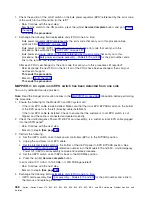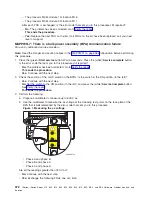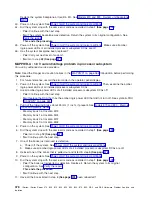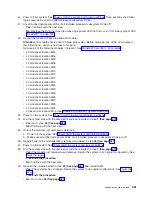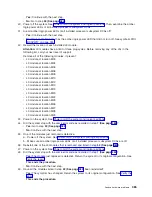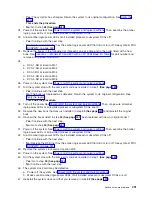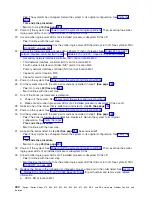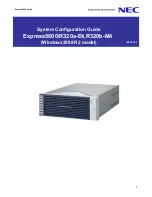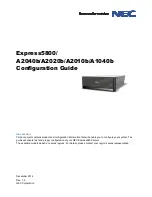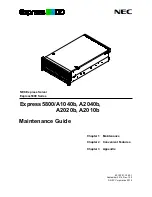
40.
Power
off
the
system.
See
Then,
examine
the
amber
logic-power
LEDs
of
all
installed
processor
subsystem
DCAs.
41.
Are
all
amber
logic-power
LEDs
of
all
installed
processor
subsystem
DCAs
off?
v
Yes:
Continue
with
the
next
step.
v
No:
Replace
the
DCA
that
has
the
amber
logic
power
LED
that
did
not
turn
off.
See
symbolic
FRU
42.
Record
the
location
of
each
installed
L3
module.
Attention:
L3
modules
have
a
limit
of
three
plug
cycles.
Before
removing
any
of
the
L3
modules
in
the
following
list,
call
your
next
level
of
support.
Remove
all
of
the
following
modules,
if
present.
See
v
L3
module
at
location
M03
v
L3
module
at
location
M04
v
L3
module
at
location
M05
v
L3
module
at
location
M06
v
L3
module
at
location
M09
v
L3
module
at
location
M10
v
L3
module
at
location
M12
v
L3
module
at
location
M13
v
L3
module
at
location
M19
v
L3
module
at
location
M20
v
L3
module
at
location
M22
v
L3
module
at
location
M23
v
L3
module
at
location
M26
v
L3
module
at
location
M27
v
L3
module
at
location
M28
v
L3
module
at
location
M29
v
Clock
card
at
location
M15
(see
43.
Power
on
the
system.
See
44.
Did
the
system
stop
with
the
same
error
code
as
recorded
in
step
1
(See
page
?
v
Yes:
Go
to
step
50
(See
page
.
v
No:
Continue
with
the
next
step.
45.
One
of
the
modules
just
removed
is
defective.
a.
Power
off
the
system.
See
b.
Make
sure
all
amber
logic-power
LEDs
of
all
installed
processor
subsystem
DCAs
are
off.
46.
Reinstall
one
of
the
modules
that
is
removed
and
listed
in
step
42
(See
page
.
47.
Power
on
the
system.See
48.
Did
the
system
stop
with
the
same
error
code
as
recorded
in
step
1
(See
page
?
v
Yes:
The
module
just
replaced
was
defective.
Return
the
system
to
its
original
configuration.
See
This
ends
the
procedure.
v
No:
Continue
with
the
next
step.
49.
Have
all
the
modules
listed
in
step
42
(See
page
been
reinstalled?
v
Yes:
The
symptom
has
changed.
Return
the
system
to
its
original
configuration.
See
This
ends
the
procedure.
v
No:
Go
to
step
45
(See
page
.
Analyze
hardware
problems
381


